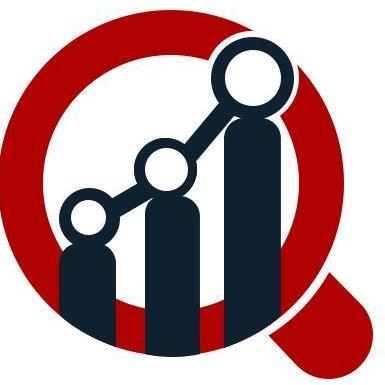In the ever-changing digital landscape, businesses constantly debate one critical question: should they focus on Search Engine Optimization or invest heavily in paid advertising? Both strategies have proven benefits, but their effectiveness depends on factors like business goals, budget, and timeline. Understanding the differences and synergies between SEO and paid ads can help you make smarter marketing decisions that actually move the needle for growth.
This article breaks down the advantages and limitations of both strategies, explores where each one shines, and provides practical guidance on how to balance them.
What is SEO?
SEO, or search engine optimization, is the practice of improving your website to rank higher in search engine results. The process involves technical adjustments, high-quality content creation, keyword targeting, and earning backlinks.
The beauty of SEO lies in its compounding effect. Unlike ads that disappear when the budget stops, SEO continues delivering traffic long after the initial work is done. For example, if your site ranks on the first page of Google for a competitive keyword, you can consistently attract qualified visitors without paying for every single click.
What are Paid Ads?
Paid advertising, often referred to as PPC (pay-per-click) or simply paid search, allows businesses to buy visibility at the top of search results or across social media platforms. Platforms like Google Ads, Facebook Ads, and LinkedIn Ads let you target very specific audiences based on demographics, interests, or search intent.
The main advantage of paid ads is speed. You can launch a campaign and start generating traffic within hours. This makes paid ads a powerful choice for businesses seeking quick results, product launches, or time-sensitive promotions.
The Case for SEO
-
Cost-Effective in the Long Run
SEO requires upfront investment, whether in hiring specialists, tools, or content creation. However, once rankings are achieved, the cost per lead is significantly lower compared to ongoing ad spend. -
Builds Trust and Authority
Users tend to trust organic search results more than sponsored ads. Ranking high in Google signals credibility and authority in your industry. -
Sustainable Growth
SEO builds a foundation that keeps driving traffic for months or even years. A blog post optimized today can still attract visitors two years later. -
Better ROI Over Time
While slower to show results, SEO often outperforms paid ads in ROI because traffic doesn’t stop when ad spend pauses.
The Case for Paid Ads
-
Instant Visibility
Paid ads guarantee your brand appears at the top of search results or in front of highly targeted audiences. -
Precise Targeting
With advanced targeting options, you can reach users by location, device, interest, or behavior, making your campaigns more efficient. -
Scalability
If you have the budget, you can scale campaigns quickly. This is especially effective for product launches, sales events, or seasonal offers. -
Data and Insights
Paid ads provide robust analytics, giving marketers insights into customer behavior, conversion rates, and the effectiveness of different messages.
SEO vs Paid Ads: The Key Differences
| Aspect | SEO | Paid Ads |
|---|---|---|
| Cost Structure | Upfront investment, long-term returns | Ongoing cost per click or impression |
| Timeline | Slow results (3–6 months) | Immediate visibility |
| Sustainability | Long-lasting | Ends when the budget stops |
| Trust Factor | Higher trust (organic results) | Perceived as promotional |
| Scalability | Grows gradually | Scales instantly with budget |
When to Choose SEO
-
If you aim for long-term growth.
-
When the budget is limited, but you can invest time.
-
If you want to establish brand authority in your niche.
-
Perfect for content-heavy industries like blogging, SaaS, or education.
When to Choose Paid Ads
-
If you need immediate results.
-
When promoting time-sensitive offers.
-
If your business is new and you don’t have domain authority yet.
-
Great for eCommerce stores running promotions or launches.
Combining SEO and Paid Ads
The most effective growth strategy isn’t choosing between SEO and paid ads, it’s knowing how to combine them. For example:
-
Use paid ads to generate traffic and leads quickly while your SEO campaigns are ramping up.
-
Rely on SEO for evergreen content and organic visibility that reduces reliance on ad budgets over time.
-
Analyze PPC data to identify high-converting keywords, then use them in SEO campaigns.
-
Retarget website visitors with paid ads to reinforce brand awareness.
This integrated approach ensures you’re not overly dependent on a single channel and helps maximize both short-term and long-term growth.
Example: Growth in a Competitive Market
Let’s say a Digital Marketing Agency in Pakistan wants to attract new clients. The agency could use Search Engine Optimization to rank for long-tail keywords related to marketing services, gradually building organic traffic. At the same time, they could run targeted Google Ads campaigns to appear for competitive queries that might take months to rank for organically.
By combining these methods, the agency ensures it captures both immediate leads and builds sustainable visibility for the future.
Common Mistakes to Avoid
-
Relying only on paid ads without building organic visibility. This leads to dependency on continuous ad spend.
-
Expecting SEO to deliver overnight results. It’s a long game and requires patience.
-
Neglecting user experience. Both SEO and ads are wasted if visitors don’t convert.
-
Not tracking ROI. Whether organic or paid, measure performance to refine your strategy.
Conclusion
SEO and paid ads aren’t rivals; they’re complementary. If your goal is fast traffic and immediate conversions, paid ads are unbeatable. But if you’re after long-term, sustainable growth, SEO is the foundation you can’t ignore.
The smartest businesses blend both: leveraging ads for short-term wins while investing in SEO for lasting visibility. This dual approach ensures steady growth, reduced risk, and a stronger brand presence over time.





